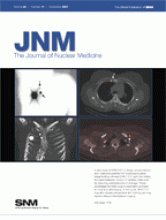REPLY: It seems to me that the letter by Patel et al. failed to identify the specific cause for this hepatitis C virus (HCV) outbreak, and in fact the letter made the whole issue more confusing. If the pharmacist who radiolabeled WBCs on October 14, 2004, had to exit the “blood room” to the “main room” to measure the radioactivity of 111In and 111In-oxine–labeled white blood cells, the syringes containing these materials would have been capped during the dose measurement and brought back to the blood room after the measurement. Also, the letter indicated that these syringes would not be reused “because of their radioactive contents.” Thus, the process and syringes should not be the causes for the HCV contamination. Patel et al. surmised that a contaminated vial or bag of saline or possibly a contaminated syringe was somehow moved from the blood room to the main room and somehow caused contamination only to vial 1 and not the other 5 vials of 99mTc-sestamibi, all of which were prepared 1 min apart by the same pharmacist in the same hood (1). Let us assume that contaminated saline vials/bags or syringes were carried inadvertently into the main room on the afternoon of October 14, 2004. Before the preparation of 99mTc-sestamibi (vials 1–6) in the early morning of October 15, 2004, the pharmacist would have discarded any contaminated supplies (e.g., unwrapped syringes or used saline vials or bags) left in the hood of the main room as per the statement (i.e., “No pharmacists reported improper disposal or reuse of contaminated equipment or supplies.”) in the letter by Patel et al.
Even though 59 (82%) of 72 patients who were injected with 99mTc-sestamibi drawn from vials 2–6 were later tested for anti-HCV and all were negative (1), I think that it would be prudent to closely follow up the medical condition of the other 13 individuals who did not take part in this test because the exact cause for this catastrophic HCV contamination is still unclear. Have symptoms related to HCV, hepatitis B virus, or HIV (human immunodeficiency virus) developed in any of these 13 patients after the incident?
There is no doubt that higher standards should be established for the handling of radiolabeled blood cells to ensure product integrity and patient safety. However, we should carefully evaluate the suitability and practicality of any proposed standards so that their cost (e.g., the cost of significant changes in remodeling, monitoring, or staffing) does not force facilities (especially small or rural nuclear pharmacies/nuclear medicine laboratories) to discontinue providing products such as 111In-oxine–labeled white blood cells to patients.
Footnotes
-
COPYRIGHT © 2007 by the Society of Nuclear Medicine, Inc.







